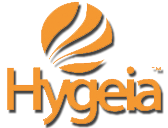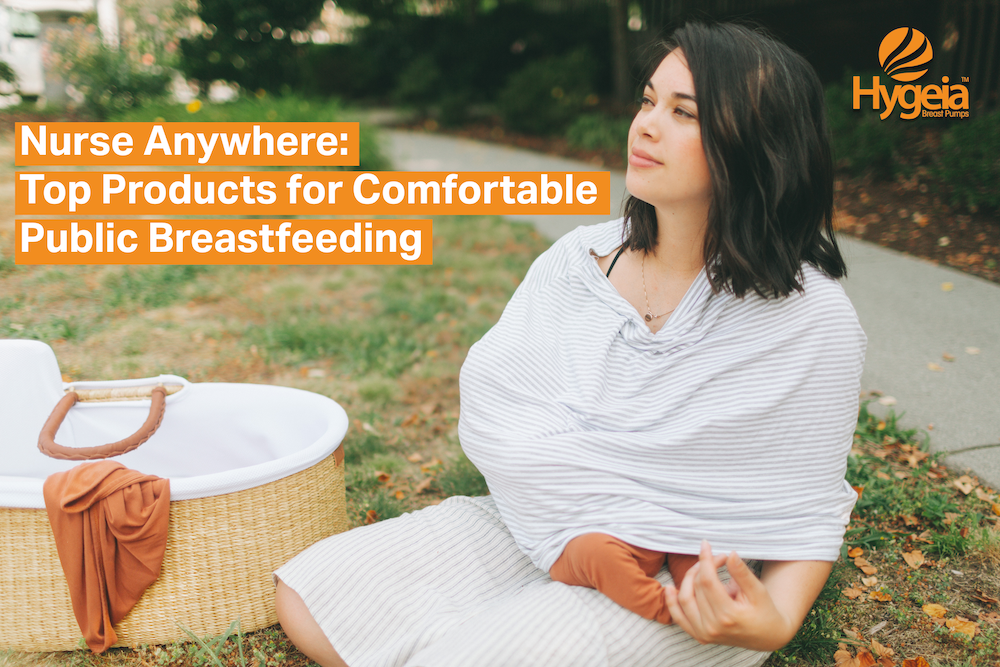
Breastfeeding in public is a powerful and natural act–let’s get that fact out in the open from the start. It allows you to nourish your baby whenever and wherever they need it. Because of this, no mom should ever feel that other people’s comfort should trump their baby’s need to eat. However, it’s also important to not judge each other as breastfeeding mothers. While you may not think twice about breastfeeding in a crowded restaurant, a first-time mom who is the first of her friends or family to breastfeed may not share your confidence
That confidence often comes with practice and early in the journey having the right tools can make a big difference. This blog covers the products meant to help create comfort, discretion, and convenience, empowering any mom to breastfeed anywhere.
Essential Apparel for Public Nursing
Choosing the right clothing can simplify public breastfeeding immensely.
Nursing Bras: A good nursing bra offers easy, one-handed access. Look for options with simple clasps or pull-aside designs. They provide necessary support while making feeding quick and discreet. Many brands offer comfortable, wire-free styles perfect for everyday wear.
What to choose? Check out this list of best nursing bras in 2025 from BabyList.
Nursing Tops: These tops feature hidden openings, lift-up panels, or crossover designs. They allow you to nurse without exposing your midsection or needing to lift your entire shirt. Pairing a nursing top with a cardigan or jacket can add another layer of discretion.
What to choose? Here’s a list of 30 of the best nursing tops in 2025 from MomLovesBest.
Layered Clothing: This simple strategy is often the most effective. Wear a loose top over a tank top. When it’s time to feed, lift the outer shirt and pull down the tank top. This creates a natural cover around your midsection while keeping you comfortable.
What to choose? Try these nursing tanks recommended by Mom Junction.
Covers and Privacy Tools
While not every mom chooses to use one, nursing covers can offer extra privacy. Some baby’s even come to prefer the cover!
Traditional Nursing Covers: These are often apron-style or poncho-style fabrics that drape over you and your baby. They come in various patterns and materials. Some have a rigid neckline that allows you to maintain eye contact with your baby.
Check it out: The Kids N’ Such Nursing Cover with a built in burp cloth.
Multi-Use Covers: Many popular covers double as car seat covers, shopping cart covers, or even scarves. This versatility makes them a smart investment for busy moms. They are lightweight and easy to pack.
Check it out: These top picks are extremely versatile and well loved.
Light Blankets or Swaddles: A simple, lightweight blanket or muslin swaddle can serve as an impromptu nursing cover. They are breathable and typically something you already carry for your baby.
Check it out: The Aden+Anais Muslin Swaddle Blankets are a long-time favorite.
Beyond the Products: Confidence and Rights
Remember, you have the legal right to breastfeed in public in all 50 U.S. states. The best product for public breastfeeding is often your own confidence. The tools listed in this blog simply offer practical ways to feel more comfortable and empowered as you nourish your baby, no matter where you are.
Use this guide to be well versed in your state’s public breastfeeding laws and how your rights are protected.
Pumping in Public
You also have every right to pump in public. The Hygeia Express is dependable for quick, quiet pumping when you need to relieve engorgement or express any amount of milk. With it’s collection cups the Hygeia Express even functions as a hands-free pump. By fitting inside your bra, it allows for completely hands-free and discreet milk expression. Weighing less than a pound, it is ideal for multitasking or pumping on the go without drawing attention due to it’s whisper quiet technology.
At Hygeia Health, we champion every breastfeeding mom. We understand the importance of reliable tools that integrate into your active life. We believe access to a quality pump is a right, not a privilege. Did you know that many insurance plans cover the cost of a breast pump? Hygeia Health specializes in helping moms navigate this process to get a 100% insurance-covered breast pump.
Ready to enhance your breastfeeding confidence with a high-quality pump designed for your active life? Apply today to see if you qualify for a free Hygeia Health breast pump.
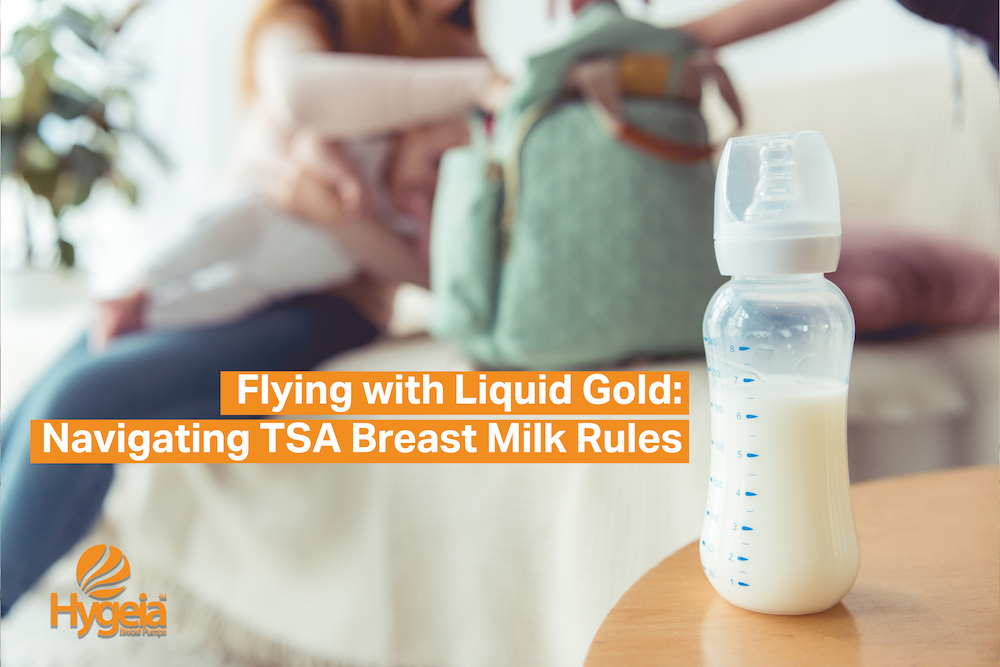
Vacation time has arrived! You’d be psyched if you weren’t stressing about what unexpected hiccups traveling with a baby may bring. One common concern is how to manage breast milk and breast pumps through airport security. The good news is, the Transportation Security Administration (TSA) has specific, clear rules designed to support parents. Understanding these TSA breast milk rules can help ease your travel worries and ensure your breastfeeding journey continues smoothly, even on the go.
TSA Breast Milk Rules: The Essentials
To give you some immediate relief, know that a mama’s breastmilk rules are different from the everyday passenger. When you’re flying with breast milk, it’s important to know the key regulations.
Exempt from the 3-1-1 Rule: Unlike other liquids, breast milk (and formula, and juice for infants) is exempt from the 3-1-1 rule for carry-on luggage. This means there is no quantity limit for how much milk you can bring. You heard that right: you can bring as much as you need.
The 3-1-1 Rule states a carry on bag is limited to 3.4oz (100mL) of liquid (3) in one (1) transparent quart size bag per passenger (1). But, reiterate, this does NOT apply to you, breastfeeding mama! You can carry breast milk in quantities greater than 3.4 ounces in your carry-on bag and it does not need to fit into a quart-sized bag.
Form of Milk: The rules–or lack of the 3-1-1 rule–applies whether your breast milk is fresh, frozen, or partially thawed. Just be prepared for them to be screened separately.
Note that it is possible that TSA will also require partially thawed breast milk for testing. It’s not common and just depends on the airport. They could require enough liquid to use a sanitary test strip to test it.
Cooling Aids Allowed: Ice packs, freezer packs, and frozen gel packs are permitted in carry-on bags to keep your breast milk cool, even if they are partially melted. These are also exempt from the 3-1-1 rule as well.
Declaration is Key: Always declare that you are carrying breast milk (and associated cooling aids) to a TSA officer at the start of the screening process. This helps them guide you through the correct procedure where these things can be screened separately.
Screening Process: Your breast milk will be screened, but you can request that your milk not be x-rayed. If you opt out of x-ray screening, the TSA officer will likely perform additional screening, which may include opening the containers or a separate search. You have the right to refuse the opening of sealed containers if you are concerned about contamination. In such cases, alternative screening procedures will be offered. Don’t stress it too much; TSA officers are trained to accommodate breastfeeding parents.
Why These Rules Matter for Breastfeeding Moms
These relaxed TSA breast milk rules are vital for mothers. They allow you to maintain your milk supply by keeping to your pumping schedule while traveling. This flexibility ensures your baby receives their essential nutrition without interruption, whether you’re traveling with them or pumping while away. It reduces stress, making air travel a less daunting experience for breastfeeding moms.
Traveling with Your Breast Pump
Good news! Your breast pump is considered a medical device by the TSA. Here is what this means:
Carry-On or Checked: You can bring your breast pump as a carry-on item in addition to your personal bag, or you can check it. Many moms prefer to carry it on to avoid potential damage or loss.
No Special Screening: Your breast pump will go through standard x-ray screening like other electronics.
Simplify Your Travel with the Right Pump
A high-quality breast pump designed for portability can make all the difference when flying. Choosing a pump that is efficient and easy to clean aligns perfectly with the demands of airport security and busy travel days.
At Hygeia Health, we understand the unique needs of breastfeeding moms on the go. Our high-quality breast pump, the Hygeia Express, is built for reliability and ease of use, making it an excellent choice for travel.
Did you know that many insurance plans cover the cost of a breast pump? Hygeia Health specializes in helping moms navigate this process to get a 100% insurance-covered breast pump. Ready to travel with confidence, knowing your milk supply is supported? Apply today to see if you qualify for the Hygeia Express and make your next flight a breeze.
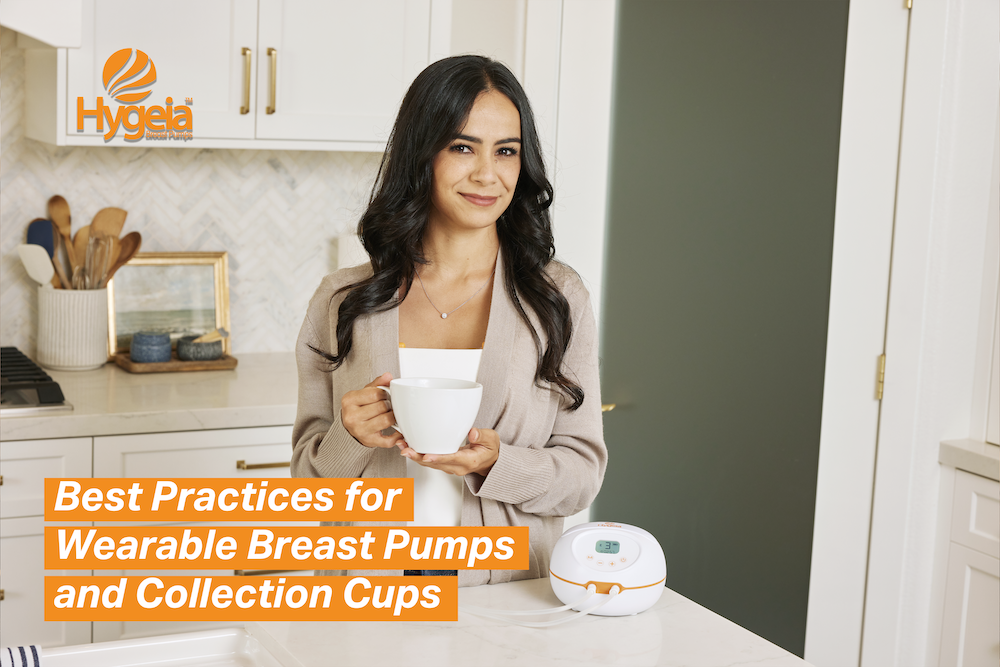
Life with a newborn moves fast and before you know it, a work schedule beckons. Many moms want to continue providing breast milk for their babies past those first weeks of infancy, but traditional pumping can tie them down or be too all-consuming to fit into the schedule. This is where wearable breast pumps and collection cups come in. These innovative tools offer incredible freedom, letting you pump discreetly while you tackle chores, work, or simply enjoy hands-free moments. But to get the most out of them, knowing a few best practices for wearable breast pumps helps.
Understanding Wearable Technology
Wearable breast pumps are small, motor-driven pumps that fit inside your bra. They collect milk directly into a cup, freeing you from bottles and tubes hanging from your chest.
Collection cups, on the other hand, are designed to fit with a traditional pump’s motor, replacing the standard bottles to offer a more discreet, in-bra pumping experience.
Both aim to make pumping on the go easier and more integrated into your daily life.
Choosing the Right Fit: Flange Sizing Matters
Just like with any breast pump, flange size is critical for comfort and efficient milk expression with wearable pumps and collection cups. A flange that’s too small or too large can lead to discomfort, pain, and reduced milk output.
How to Check: After a few minutes of pumping, look at your nipple. It should move freely in the tunnel without too much of the areola being pulled in.
Signs of Poor Fit: Pain, redness, nipple blanching (turning white), or feeling like you’re not fully emptying your breast
Solution: Many brands offer various flange sizes. If you’re unsure, consult a lactation consultant for a proper fitting. Getting this right prevents pain and maximizes your milk production. In some cases moms can do best without inserts in their wearables.
Maximizing Your Wearable Pumping Sessions
Even with the convenience of wearable pumps, technique still matters for a good milk yield. Additionally, using only this hands-free technology for pumping isn’t recommended by many experts.
Reserve Wearable Pumping Time: Use your wearable pump and collection cups only a few times a day if you are exclusively pumping or semi-exclusively pumping. Choose the circumstances or times when it is most helpful, like car rides or when juggling kid demands.
Plan for Longer Pump Sessions: Pump until your breasts feel empty or milk flow significantly slows. This might vary from session to session, but many moms need to pump longer (often 10+ minutes more than usual) to get the same level of stimulation and milk.
Standard Prep and Set Up Matters: Keep to your regular best practices for pumping. A gentle breast massage or warm compress before you start can help with milk let-down. Be sure to have water close at hand and stay hydrated.
Proper Placement: Ensure the collection cup or wearable pump is positioned correctly against your breast, forming a good seal. This prevents leaks and ensures efficient suction.
Cycle and Suction Settings: Experiment with the settings. Start with a faster, lighter suction to encourage let-down, then switch to a slower, deeper suction cycle for milk expression. Adjust suction to a comfortable level. You should never feel pain.
Cleaning and Maintenance for Longevity
Maintaining hygiene is crucial for any breast pump, especially wearable pumps and collection cups that touch your skin and milk directly.
Wash After Each Use: Disassemble all parts that come into contact with milk. Wash them immediately with warm, soapy water and rinse thoroughly.
Sterilize Regularly: Sterilize parts according to manufacturer instructions, usually daily or every few days, especially for newborns.
Air Dry Completely: Allow all parts to air dry completely on a clean paper towel or drying rack to prevent bacterial growth.
Check for Wear and Tear: Regularly inspect silicone parts for rips or cracks, as these can affect suction and hygiene. Replace them as needed.
Embrace the Freedom You Deserve with Hygeia Health
Wearable breast pumps and collection cups are game-changers for active moms, offering flexibility and discreetness. By following these best practices, you can ensure comfortable, efficient milk expression and maintain your milk supply.
At Hygeia Health, we understand the demands of modern motherhood. We are committed to providing high-quality breast pumps that support your unique breastfeeding journey. Did you know that many insurance plans cover the cost of a breast pump? Hygeia Health specializes in helping moms like you navigate this process to get a 100% insurance-covered breast pump.
Ready to experience the freedom of efficient, discreet pumping? Apply here to see if you qualify for a 100% insurance-covered breast pump and make your breastfeeding journey smoother.
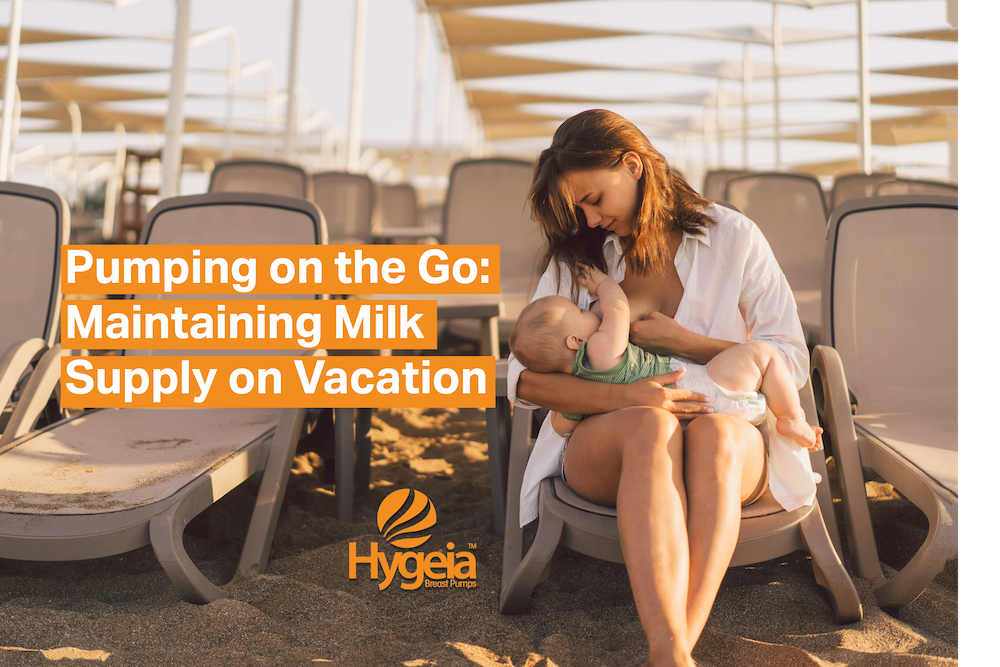
Whether it is splashing on sandy beaches and poolside relaxation or traveling cross country and quality family time, a vacation requires a lot of preparation and planning. For breastfeeding mamas, a getaway can also raise concerns about maintaining milk supply while away from the comfort of routine.
Don’t let these anxieties hold you back! With a little planning and the right tools, you can confidently navigate your travel adventures while ensuring your breastfeeding journey continues seamlessly.
Planning for Pumping Success
Pack Smart: A dedicated pumping bag is your best friend. Look for one with insulated compartments to store breast milk collection bottles and a cooler pack. Include essentials like your breast pump, flanges, storage bags, nursing pads, and perhaps a comfortable hands-free pumping bra – a game-changer for multitasking while pumping!
Maintain Your Pumping Schedule: Consistency is key to milk production. Aim to pump as close to your usual feeding routine as possible, even if it means adjusting timings slightly. If you typically pump every 3 hours at home, plan on expressing milk at least every 4-5 hours during your travels.
Find Your Haven: Airports, museums, and many public buildings offer designated lactation rooms for breastfeeding and pumping. Explore apps or websites like Infant Nutrition Council of America (INCA) to locate lactation havens near your destinations. Don’t hesitate to ask staff for assistance in finding a suitable space.
Essential Pumping Gear for Travel
Hygeia Hospital-Grade Breast Pump: Consider a high-quality, portable breast pump like Hygeia’s hospital-grade Express breast pump. These pumps are designed for efficiency and comfort, making it easy to express milk on the go. They are also discreet and quiet, allowing you to pump confidently in most settings.
Double Pumping: Hygeia’s pumps often allow for double pumping, stimulating both breasts simultaneously and potentially increasing milk output in less time. This time-saving feature is a lifesaver for busy moms on the move–or trying to keep a vacation schedule.
Fueling Your Breast Milk Production
Hydration is Key: Staying hydrated is crucial for maintaining milk supply, especially in hot weather. Carry a reusable water bottle and make a conscious effort to sip frequently throughout the day.
Nourish Your Body: Healthy snacks and meals are essential for breastfeeding mothers. Pack nutritious options like fruits, nuts, and whole-grain bars to keep your energy levels up and support milk production.
Storing Liquid Gold: Keeping Your Breast Milk Safe
Fresh is Best: Freshly pumped milk can be stored at room temperature (up to 77°F) for up to 4 hours. This is ideal for short travel days or expressing milk between pumping sessions.
Cool it Down: For longer storage, transfer expressed milk to sanitized breast milk storage bags and place them in a cooler bag with ice packs. Properly stored milk can last up to 24 hours in a cooler bag with ice packs and up to 4 days in a refrigerator.
Deep Freeze for Extended Stays: If you’ll be away for an extended period, consider freezing your expressed milk. Properly labeled milk can be stored in the deep freezer (at 0°F or below) for up to 12 months.
Thawing and Reheating Safely
Never Microwave: Microwaving breast milk destroys essential nutrients and can create hot spots that could burn your baby’s mouth.
Gradual Thawing: The safest method is to thaw frozen breast milk in the refrigerator overnight or for generally 12 hours. If you need to thaw milk quicker, place the sealed milk bag in a container of lukewarm water, but never in boiling water. For a complete guide on thawing and reheating your milk, check out this article.
Temperature Check: Before feeding, test a drop of milk on the inside of your wrist to ensure it’s lukewarm, not hot.
Embrace the Journey with Hygeia Health
Juggling motherhood and summer adventures can be demanding, but with the right preparation and equipment, you can confidently maintain your milk supply while exploring new places. Hygeia Health is dedicated to empowering mothers on their breastfeeding journeys.
We offer a convenient 100% insurance-covered breast pump program for eligible mothers. Our pumps are designed for comfort, efficiency, and portability, making pumping on the go a breeze. Click here to see if your eligible for Hygeia’s 100% insurance-covered pump program and pack for a summer adventure filled with confidence and a thriving breastfeeding journey!
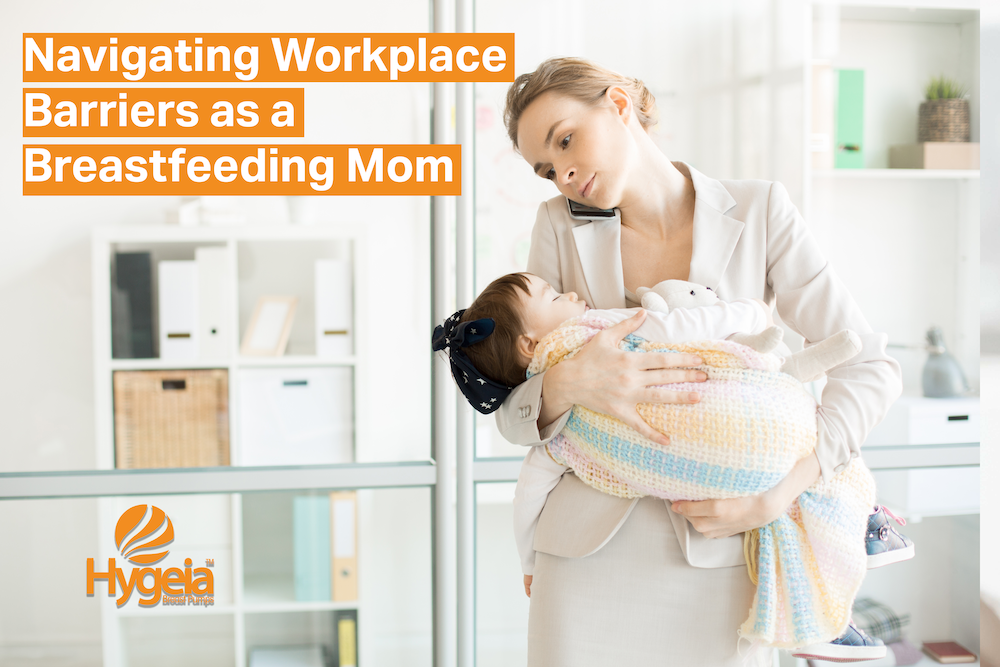
Returning to work after maternity leave presents a unique set of challenges for new mothers. Not only can it be emotionally wrecking to leave your baby for the first time, but continuing to breastfeed adds new workplace barriers to navigate in your daily workflow.
For those choosing to breastfeed, adding pumping sessions to a workday can feel like a complex puzzle. Workplace environments, unfortunately, do not always offer the seamless support needed. Understanding common barriers and knowing how to overcome them is key to a successful breastfeeding journey.
The power tools needed to succeed? Know your rights. Communicate proactively. Be prepared. This guide will outline the main obstacles many breastfeeding moms face and provide actionable solutions to ensure you can continue providing for your baby while managing your career.
Lack of Adequate Space for Pumping & Cleaning
Concern: Many workplaces do not provide private, clean, and comfortable spaces (other than a bathroom) for expressing milk even though it is legally required in many places. Not only does this make it awkward for the actual job of pumping, but it’s troubling to not have sanitary and accessible facilities for cleaning pump parts.
Solution: Request a dedicated pumping space. Clearly communicate the need for a private, clean space that is not a bathroom. Offer suggestions if your workplace doesn’t currently have one (e.g., a spare office, a partitioned area).
Rigid Work Schedules & Break Times
Concern: Inflexible schedules, long hours, and limited control over breaks can make regular pumping difficult, especially for mothers of newborns who need to pump frequently. Even with legal requirements for “reasonable break time,” the actual time needed to pump, set up, clean, and store milk can be challenging to fit into demanding work schedules. Additionally, jobs that involve frequent travel can pose significant logistical challenges for breastfeeding mothers needing to pump and store milk on the go.
Solution: Develop a pumping schedule and a system, but communication is key. Plan your pumping breaks and discuss them with your supervisor to ensure they are feasible within your workday. Be prepared to be flexible, but advocate for your needs. Utilizing hands-free pumping options like a hands-free breast pump or pumping bra can allow you to work on some tasks while pumping, maximizing your time.
Concerns about Job Security or Advancement
Concern: Some mothers fear that taking time to pump or requesting accommodations might negatively impact their career progression or job security. This is likely because many new mothers may not be fully aware of their legal rights to break time and a private pumping space.
Solution: Know your rights! Familiarize yourself with federal and state laws regarding breastfeeding in the workplace. The PUMP for Nursing Mothers Act and the Fair Labor Standards Act (FLSA) provide important protections regarding break time and private space.
Unsupportive Work Culture
Concern: A lack of understanding or empathy from supervisors and colleagues can create pressure to prioritize work over pumping, leading to stress and potential impact on milk supply. This lack of open acceptance in the workplace culture make moms feel uncomfortable or self-conscious about pumping at work.
Solution: Educate your workplace. If you sense a lack of understanding, provide your employer and colleagues with information about the benefits of breastfeeding and the legal requirements for supporting nursing mothers. Resources from the U.S. Department of Health & Human Services and their Office on Women’s Health.
Being Unprepared
Concern: Having a routine in your own home does not always translate to a relaxed routine in a new environment. Physically demanding jobs may make finding the time and energy to pump consistently more challenging as well.
Solution: Pack and prepare efficiently. Have all your pumping supplies organized and ready to go to minimize setup and cleanup time. Consider bringing extra pump parts to avoid the need to wash them immediately if facilities are limited. Also have a plan for storing your breast milk safely, whether in a personal cooler or a designated refrigerator (if available and permitted). Being prepared with all of your supplies will help establish a routine for your new workplace situation.
Bonus Tips for the Best Experience
Communicate Proactively with Your Employer: Discuss your needs with your employer before returning to work. Having an early conversation allows for planning and addressing potential concerns.
Advocate for Workplace Policy Changes: If you encounter significant barriers, consider working with HR or other employee groups to advocate for more supportive breastfeeding policies within your workplace.
Know Your Options if Your Rights Are Violated: If your employer fails to provide the legally required accommodations, you have the right to file a complaint with the Wage and Hour Division of the U.S. Department of Labor.
Seek Support: Connect with other breastfeeding mothers or lactation consultants for advice and emotional support in navigating workplace challenges. Online support groups or local organizations can be valuable resources.
Hygeia Offers Pump Support
Returning to work while continuing to breastfeed is a significant commitment. Every ounce of breast milk you provide is valuable, and your ability to do so should be supported.
At Hygeia Health, we understand these challenges intimately. We believe that providing a high-quality breast pump should be a right, not a luxury, helping you overcome some of these workplace hurdles with ease. Our hospital-grade breast pumps are designed for efficiency and reliability, making your pumping sessions smoother and more productive.
Don’t let workplace barriers keep you from your breastfeeding goals. Let Hygeia help navigate insurance coverage and get a premium, 100% insurance-covered breast pump delivered right to your door. Having the best pump is the first step toward a more supported return to work.
We are dedicated to supporting your breastfeeding journey every step of the way. Apply today to see if you qualify for a free Hygeia Health breast pump.

